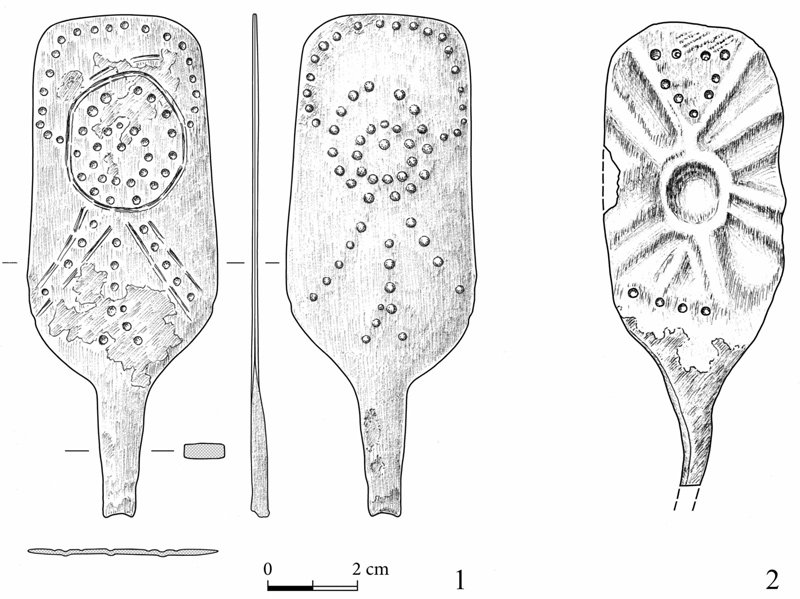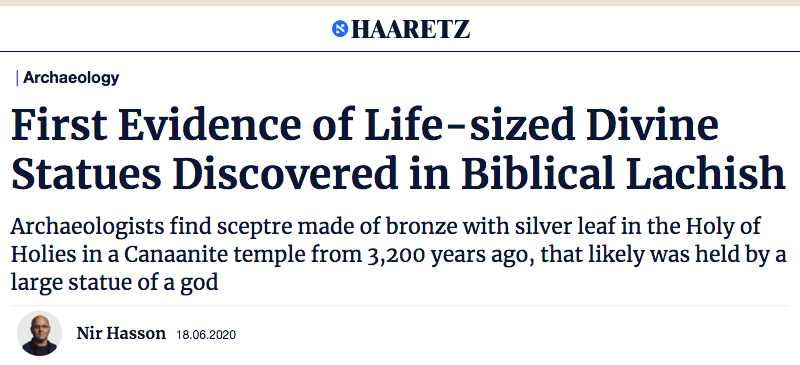
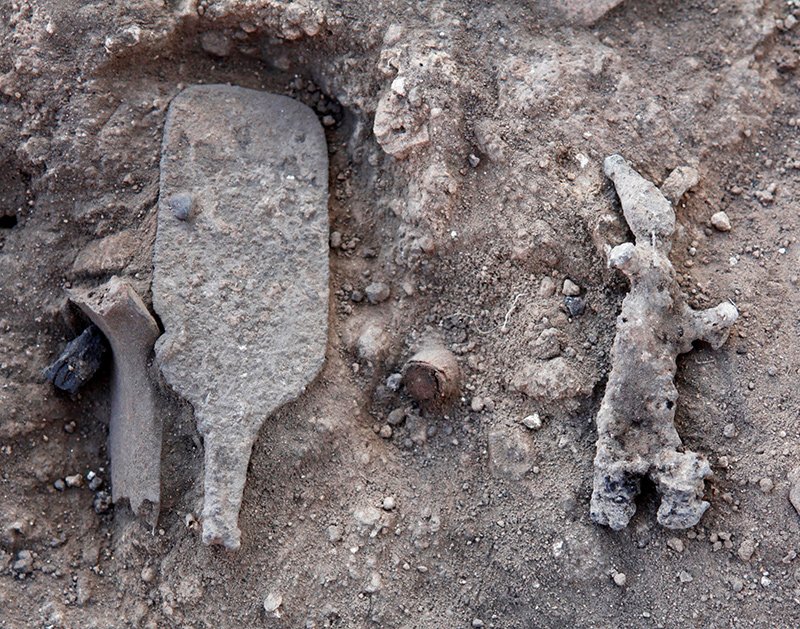
A sceptre about 3,200 years old made of copper and coated in silver leaf found in the biblical city of Lachish could be the first evidence of life-sized “divine statues” in the Levant, as described in ancient sources but never found to date, researchers from the Hebrew University report in the journal of Antiquity.
The discovery in the Canaanite city is one of a kind, says Prof. Yossi Garfinkel of the Hebrew University of Jerusalem.
The sceptre is all that remains of what had been a large statue of a god gracing the city’s temple in antiquity, the professor thinks. It was discovered at a spot believed to be the Holy of Holies in the Canaanite temple, he reports in Antiquity. That position is exactly as described in Mesopotamian texts, which say the life-sized statues of gods stood in the most secluded part of the temple.
In fact, though life sized divine statues were described time and again in ancient records, and there is even a Neo-Assyrian relief from Nineveh depicting soldiers looting such a statue from a temple, no intact ones have ever been found in the Levant. Nor has one now, but this remarkable sceptre could have been held by one.
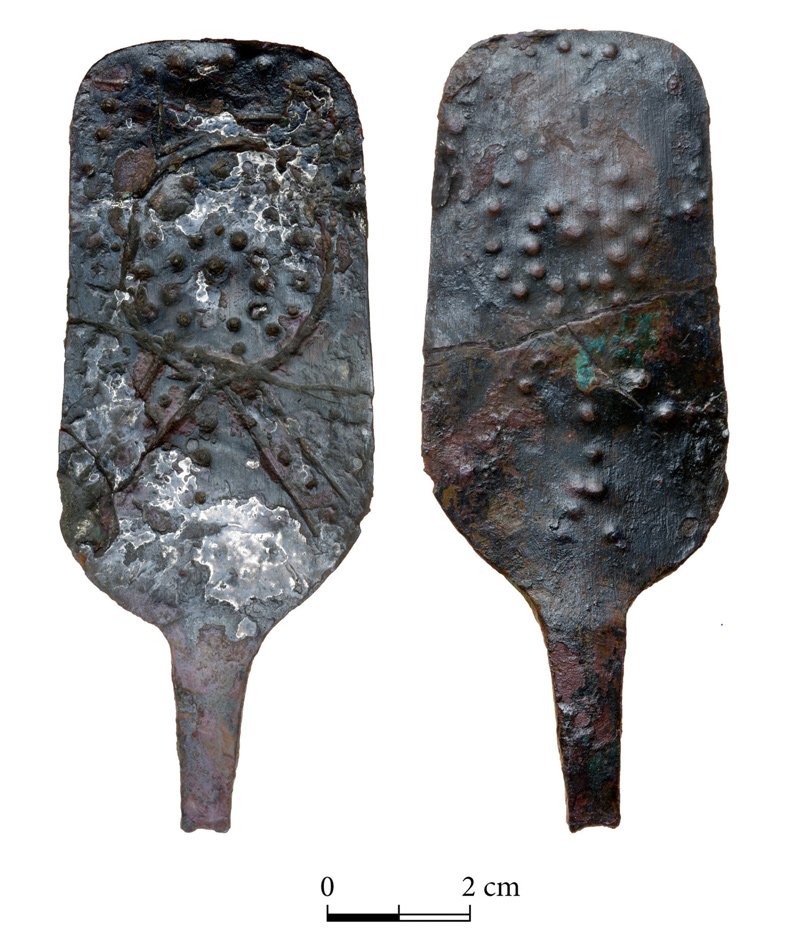
It bears adding that quite large metal divine sculptures, 36 and 56 centimeters tall, have been found in Cyprus but even ones that size haven’t been found in the Levant. The site of the so-called earliest temple in the world, Gobekli Tepe, also features large stone sculptures from as much as 11,000 years ago. Statues a meter tall made of mud and plaster were found in Jericho and ‘Ain Ghazal from the 9th millennium B.C.E.
The newly reported sceptre, as said from the much later Canaanite period around 3,200 years ago, had actually been was discovered in Lachish some years ago by Hebrew University team headed by Garfinkel at Lachish, a city in the Judean plain. It is just over 11 centimeters long by four centimeters wide, and coated with thin silver leaf on its front, and basically looks like a spatula. It is just over 11 centimeters long by four centimeters wide (4.3 by 1.5 inches), is coated with thin silver leaf on its front, and basically looks like a spatula. This artifact was engraved with dots and lines that do not seem to be figurative, but could theoretically represent an astral or mythical symbol, Garfinkel suggests.
Near it the archaeologists also found two small statuettes of divine entities, apparently representing Baal.
From its discovery the researchers thought the find was a ritual object, but its significance only came to light after it had been cleaned, and they realized it was made of bronze with silver leaf. They also found bronze weapons, gold earrings, gold wire, and a lot of beads in the temple area.
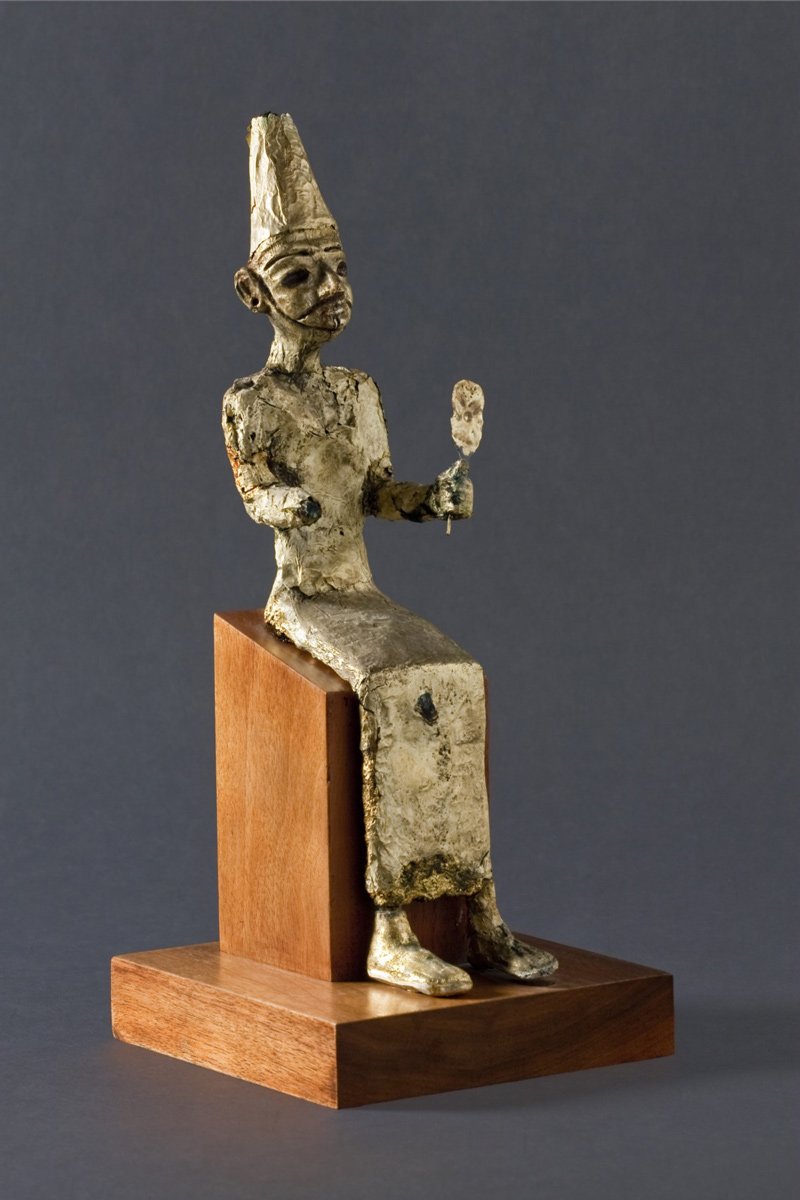
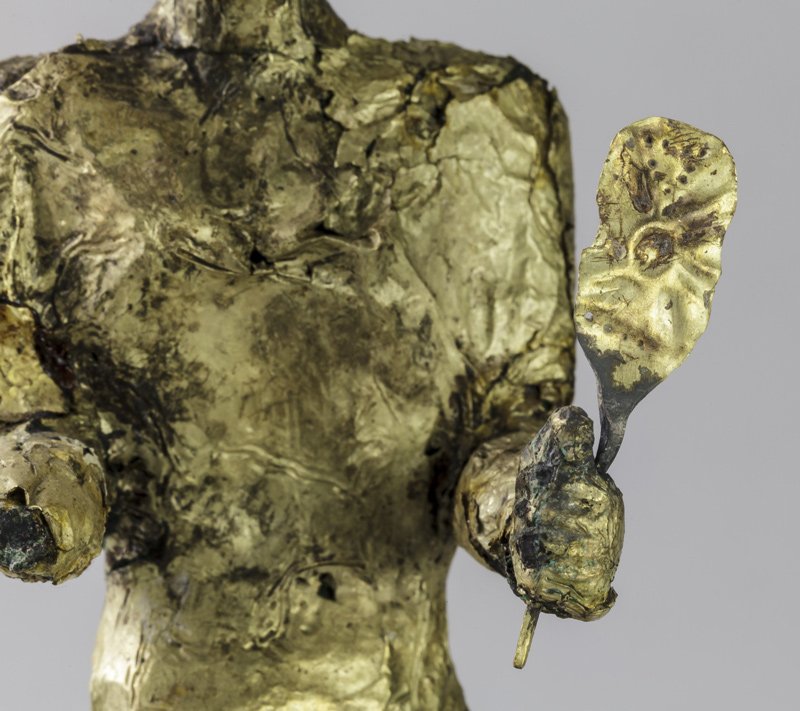
It bears adding that archaeologists have found smaller metal statues of gods, including one (excavated during the British Mandate period) at Tel Megiddo. The wee divine statue from Megiddo, also from the Canaanite period, is a miniature 27 centimeters in length and is gilded in bronze. That statue is holding something in hand that quite resembles the sceptre found in Lachish. The two are identical in their external shape, but have different decorations, Garfinkel learned.
The conclusion is that the sceptre from Lachish is a vestige of a large statue of a Canaanite god, perhaps a life-sized one, who was holding it. The importance attributed to the sceptres, the big one at Lachish and the tiny one held by the Megiddo statuette, is evinced by their coating, with gold in Megiddo and silver in Lachish.
A similar object was excavated by Israeli archaeologist Yigael Yadin in Tel Hazor in the 1960s. The object from Hazor is adorned with snakes rather than abstract decorations like those from Megiddo and Lachish.

Garfinkel proposes two alternative explanations for the decorations on the scepter. “The significance of this complex pattern is not clear to me as yet,” he wrote in the article. “Sometimes I believe that the engraving in Lachish resembles a human figure with a large head, two diagonal arms and a schematic lower torso with two legs.”
It might not, though, he adds: “it’s possible that this form has no figurative meaning at all, but represents some astronomical or magical symbol. The decoration in Megiddo isn’t clear either, and supports the conclusion that this decoration is not figurative.”
He believes that this object is what the Bible calls the “divine scepter,” as for example in the stories of the miracles performed by Moses by means of the scepter in the book of Exodus. In the Lachish temple they also found beads, weapons and various gold items. Garfinkel estimates that some of them may have adorned the statue of the god that resided there.
One wonders why no life sized statues of gods have been found if they used to adorn temples around the region. “The statues could have been made of wood and other perishable materials,” Garfinkel suggests. Or maybe — as indicated by the beautiful sceptre — they were adorned with precious metals and stones and attracted thieves: robbing temples and tombs is not a figment of modern society. Or maybe they were looted by marauding soldiers, which isn’t a figment exclusive to modern society either.
